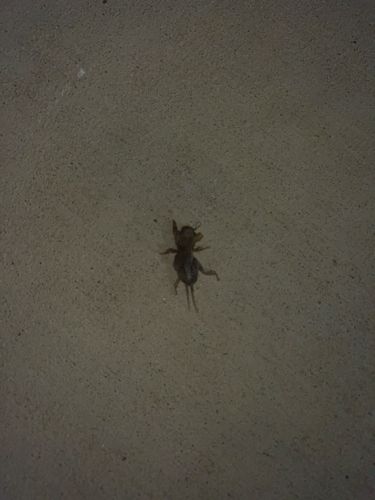Mole Cricket
Scientific Name: Gryllotalpa spp. (general, as specific species cannot be identified from image)
Order & Family: Order: Orthoptera, Family: Gryllotalpidae
Size: Typically 2.5 to 5 cm (1 to 2 inches) in length.

Natural Habitat
Mole crickets prefer moist, sandy soils, often found in lawns, golf courses, pastures, and agricultural fields. They live in burrows they dig underground.
Diet & Feeding
Their diet varies by species; some are herbivorous, feeding on roots and plant matter, others are omnivorous or carnivorous, consuming larvae, worms, and other insects.
Behavior Patterns
Mole crickets are primarily nocturnal and spend most of their lives underground, digging extensive tunnel systems. They are good at burrowing, swimming, and flying. Males produce chirping sounds during mating season to attract females.
Risks & Benefits
Risks: Certain species of mole crickets can be significant agricultural and lawn pests, causing damage to turfgrass, vegetables, and other crops by feeding on roots and dislodging plants with their tunneling activities. Benefits: Some species can be beneficial by preying on other pest insects and aerating the soil through their burrowing.
Identified on: 8/31/2025